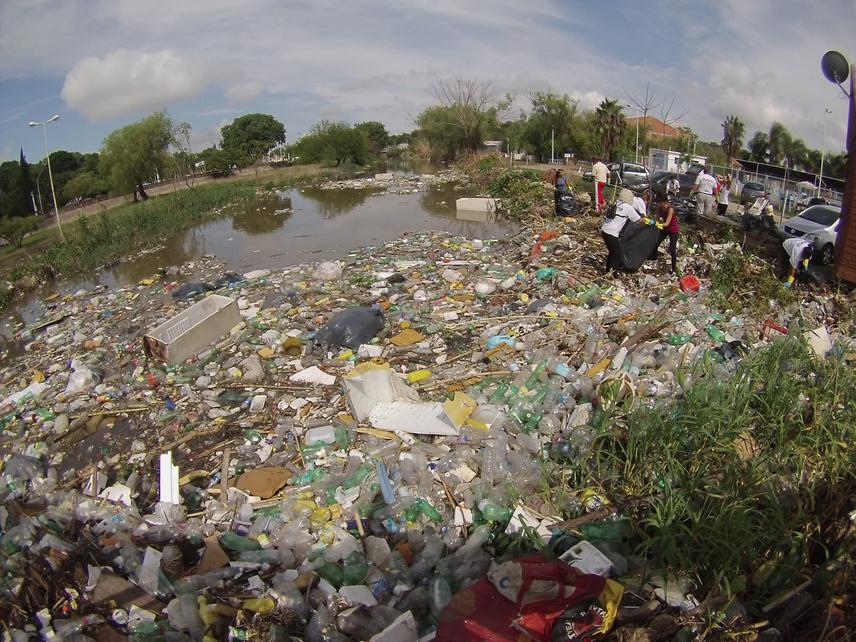Martin Blettler
Other projects
7 Feb 2017
Plastic Debris in Sediments of a Large South American River (Paraná River): Occurrence and Spatial Distribution
16 Aug 2023
Something is in the Air: Atmospheric Microplastic Transport and Deposition in Natural and Unnatural Environments of Argentina
This project aims: 1) To determine the potential presence of microplastic particles in stomach and/or gut of fish species and faeces of aquatic birds of the large Paraná River (Argentina). 2) To count and measure the detected microplastic particle (items number, area, length, volume), and to classifying them (hard plastic fragments, fibbers, foams, films). Finally, 3) to discuss and propose mitigation measurements in close relation with stakeholders, NGOs and politician.

Extremely high concentration of plastic pollution in the Antoñico urban creek, close to the Paraná River confluence.
Durability, unsustainable use and inappropriate waste management ‒particularly in developing countries‒ cause an extensive accumulation of plastic debris in freshwater habitats. It is known that microplastic debris (mainly large plastic gradually degrade into smaller fractions) are ingested by aquatic organisms, with negative consequences for survival, fitness and reproduction. Although well studied in the ocean, the microplastic ingestion has been scarcely studied in freshwater fauna. Given the social, cultural, economical and ecological (biodiversity) importance of the Paraná River (Argentina) ‒one of the top ten largest rivers in the world‒ it is essential to evaluate the potential ingestion of microplastics by fish and aquatic birds.
We expect to answer questions such as: Are microplastic particles ingested by fish and aquatic birds in the Paraná River? If yes, is the number of particles relevant by comparison with other studies worldwide? Are commercial fish species affected? What species feeding habits are more impacted (planktivorous, piscivorous or detritivorous)? What types of microplastics are predominant (fibbers, films, beads, etc)? What measures should be implemented to mitigate the microplastic pollution?
These questions must be urgently answered. Our results will allow us to suggest management strategist to mitigate the plastic pollution and its potential impact at different trophic-levels. Fishermen and general society will benefit from the implementation of these mitigation actions.
Finally, this study may trigger social pressure and actions to protect the Paraná River and other freshwater environments.